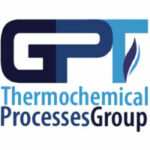SOBRE MÍ
Currently at Universidad de Las Américas, Ecuador
http://investigacion.udla.edu.ec/udla_teams/katiuska-alexandrino/
PUBLICATIONS
2025
Viteri, Fausto; Alexandrino, Katiuska; Millera, Ángela; Bilbao, Rafael; Alzueta, María U
Polycyclic aromatic hydrocarbons formed during the pyrolysis of dimethoxymethane (DMM). Comparison with other oxygenated additives Artículo de revista
En: Fuel, vol. 383, pp. 133750, 2025, ISSN: 0016-2361.
@article{viteri_polycyclic_2025,
title = {Polycyclic aromatic hydrocarbons formed during the pyrolysis of dimethoxymethane (DMM). Comparison with other oxygenated additives},
author = {Fausto Viteri and Katiuska Alexandrino and Ángela Millera and Rafael Bilbao and María U Alzueta},
url = {https://www.sciencedirect.com/science/article/pii/S0016236124028990},
doi = {10.1016/j.fuel.2024.133750},
issn = {0016-2361},
year = {2025},
date = {2025-03-01},
urldate = {2025-03-01},
journal = {Fuel},
volume = {383},
pages = {133750},
abstract = {The influence of the temperature (1075 – 1475 K) and inlet concentration of fuel (33,333 and 50,000 ppmv) on the formation of the 16 EPA-priority Polycyclic Aromatic Hydrocarbons (PAH) from the pyrolysis of dimethoxymethane (DMM) was analyzed. PAH were detected in different phases (gas phase, adsorbed on soot, and stuck on the reactor walls) and quantified by gas chromatography-mass spectrometry (GC–MS). Additionally, the toxicity of the PAH samples, expressed as B[a]P-eq, was analyzed in all experiments. A comparison with the results obtained from the pyrolysis of other oxygenated compounds was also performed and similar behaviors were observed. The main results showed that, at low temperatures, the highest concentrations of PAH were found in the gas phase, while at high temperatures were found on soot. For both inlet concentrations of DMM, the light PAH, such as naphthalene and acenaphthylene, were found in major concentrations, in all phases and temperatures. The heavy PAH, such as fluoranthene and pyrene, increased its concentration on soot at highest temperatures. The highest formation of soot was obtained at 1475 K and follows the trend: 2,5DMF < tert-butanol < 2MF < 2butanol < iso-butanol < 1-butanol < ethanol < DMC < DMM. The highest formation of PAH was at 1275 K with the tendency: tert-butanol < 2-butanol < 1-butanol < 2,5DMF < 2MF < iso-butanol < ethanol < DMC < DMM. The highest B[a]P-eq value was found in the pyrolysis of 2,5DMF, and the lowest in the pyrolysis of DMM.},
keywords = {},
pubstate = {published},
tppubtype = {article}
}
2022
Alexandrino, Katiuska; Millera, Ángela; Bilbao, Rafael; Alzueta, María U
Experimental and simulation study of the high pressure oxidation of dimethyl carbonate Artículo de revista
En: Fuel, vol. 309, pp. 122154, 2022, ISSN: 0016-2361.
@article{Alexandrino2022,
title = {Experimental and simulation study of the high pressure oxidation of dimethyl carbonate},
author = {Katiuska Alexandrino and Ángela Millera and Rafael Bilbao and María U Alzueta},
doi = {10.1016/J.FUEL.2021.122154},
issn = {0016-2361},
year = {2022},
date = {2022-02-01},
urldate = {2022-02-01},
journal = {Fuel},
volume = {309},
pages = {122154},
publisher = {Elsevier},
abstract = {An experimental and modeling study of the oxidation at high pressure of dimethyl carbonate (DMC) has been performed in a quartz tubular flow reactor. Experimental and simulated concentrations of DMC, CO, CO2 and H2 have been obtained for different temperatures (500–1073 K), pressures (20, 40, and 60 atm) and stoichiometries ($łambda$ = 0.7, 1, and 35). Both pressure and concentration of oxygen are important parameters for conversion of DMC. The simulations have been carried out using a detailed kinetic mechanism previously developed by the research group. In general, the model is able to reproduce the experimental trends of the different concentration profiles, although some discrepancies are observed between experimental and simulation results. The performance of the model was also evaluated through the simulation of literature data of the oxidation of DMC at atmospheric pressure in a flow reactor and of the DMC ignition delay times under low and high pressures. In this sense, this work contributes to the knowledge of the combustion process of DMC, by providing new experimental data on the conversion of DMC at high pressures and using a kinetic model for the interpretation of the results.},
keywords = {},
pubstate = {published},
tppubtype = {article}
}
Alexandrino, Katiuska; Millera, Ángela; Bilbao, Rafael; Alzueta, María U
Experimental and simulation study of the high pressure oxidation of dimethyl carbonate Artículo de revista
En: Fuel, vol. 309, no October 2021, 2022, ISSN: 00162361.
@article{Alexandrino2022b,
title = {Experimental and simulation study of the high pressure oxidation of dimethyl carbonate},
author = {Katiuska Alexandrino and Ángela Millera and Rafael Bilbao and María U Alzueta},
doi = {10.1016/j.fuel.2021.122154},
issn = {00162361},
year = {2022},
date = {2022-01-01},
urldate = {2022-01-01},
journal = {Fuel},
volume = {309},
number = {October 2021},
abstract = {An experimental and modeling study of the oxidation at high pressure of dimethyl carbonate (DMC) has been performed in a quartz tubular flow reactor. Experimental and simulated concentrations of DMC, CO, CO2 and H2 have been obtained for different temperatures (500–1073 K), pressures (20, 40, and 60 atm) and stoichiometries ($łambda$ = 0.7, 1, and 35). Both pressure and concentration of oxygen are important parameters for conversion of DMC. The simulations have been carried out using a detailed kinetic mechanism previously developed by the research group. In general, the model is able to reproduce the experimental trends of the different concentration profiles, although some discrepancies are observed between experimental and simulation results. The performance of the model was also evaluated through the simulation of literature data of the oxidation of DMC at atmospheric pressure in a flow reactor and of the DMC ignition delay times under low and high pressures. In this sense, this work contributes to the knowledge of the combustion process of DMC, by providing new experimental data on the conversion of DMC at high pressures and using a kinetic model for the interpretation of the results.},
keywords = {},
pubstate = {published},
tppubtype = {article}
}
2019
Alexandrino, Katiuska; Millera, Ángela; Bilbao, Rafael; Alzueta, María U
Reactivity and Physicochemical Properties of the Soot Produced in the Pyrolysis of 2,5-Dimethylfuran and 2-Methylfuran Artículo de revista
En: Energy and Fuels, vol. 33, no 10, pp. 9851–9858, 2019, ISSN: 15205029.
@article{Alexandrino2019,
title = {Reactivity and Physicochemical Properties of the Soot Produced in the Pyrolysis of 2,5-Dimethylfuran and 2-Methylfuran},
author = {Katiuska Alexandrino and Ángela Millera and Rafael Bilbao and María U Alzueta},
doi = {10.1021/acs.energyfuels.9b01760},
issn = {15205029},
year = {2019},
date = {2019-10-01},
journal = {Energy and Fuels},
volume = {33},
number = {10},
pages = {9851--9858},
publisher = {American Chemical Society},
abstract = {Alkylated furan derivatives, such as 2,5-dimethylfuran (2,5-DMF) and 2-methylfuran (2-MF), have shown, at laboratory scale, a relatively high tendency to form soot. However, soot emissions from diesel engines are lower when diesel/2,5-DMF and diesel/2-MF blends are used. This could indicate that the soot produced in the conversion of these compounds has high reactivity toward some gases present within the combustion chamber, reducing soot emissions in the exhaust gas. In this context, a study on the reactivity and the characterization of the soot generated in the pyrolysis of 2,5-DMF and 2-MF, under different experimental conditions, was performed in an effort to increase the understanding of the reactivity and physicochemical properties of the soot originating in the conversion of these furan derivatives. The soot samples analyzed were obtained in previous works using different concentrations of the alkylated furan derivatives (5000, 7500, and 15â»000 ppm of 2,5-DMF, and 9000 and 18â»000 ppm of 2-MF) and at different temperatures (1275, 1375, and 1475 K). The reactivity experiments were performed at 1275 K with 500 ppm of O2 and 2000 ppm of NO in a tubular quartz flow reactor. Different instrumental analysis techniques were employed to characterize the soot samples and to try to link the soot reactivity with its physicochemical properties. The dependence of soot reactivity and properties with soot formation conditions, namely, temperature and inlet fuel concentration, is studied.},
keywords = {},
pubstate = {published},
tppubtype = {article}
}
Alexandrino, Katiuska; Millera, Ángela; Bilbao, Rafael; Alzueta, María U
Reactivity and Physicochemical Properties of the Soot Produced in the Pyrolysis of 2,5-Dimethylfuran and 2-Methylfuran Artículo de revista
En: Energy and Fuels, vol. 33, no 10, pp. 9851–9858, 2019, ISSN: 15205029.
@article{Alexandrino2019a,
title = {Reactivity and Physicochemical Properties of the Soot Produced in the Pyrolysis of 2,5-Dimethylfuran and 2-Methylfuran},
author = {Katiuska Alexandrino and Ángela Millera and Rafael Bilbao and María U Alzueta},
url = {https://pubs.acs.org/sharingguidelines},
doi = {10.1021/acs.energyfuels.9b01760},
issn = {15205029},
year = {2019},
date = {2019-10-01},
journal = {Energy and Fuels},
volume = {33},
number = {10},
pages = {9851--9858},
publisher = {American Chemical Society},
abstract = {Alkylated furan derivatives, such as 2,5-dimethylfuran (2,5-DMF) and 2-methylfuran (2-MF), have shown, at laboratory scale, a relatively high tendency to form soot. However, soot emissions from diesel engines are lower when diesel/2,5-DMF and diesel/2-MF blends are used. This could indicate that the soot produced in the conversion of these compounds has high reactivity toward some gases present within the combustion chamber, reducing soot emissions in the exhaust gas. In this context, a study on the reactivity and the characterization of the soot generated in the pyrolysis of 2,5-DMF and 2-MF, under different experimental conditions, was performed in an effort to increase the understanding of the reactivity and physicochemical properties of the soot originating in the conversion of these furan derivatives. The soot samples analyzed were obtained in previous works using different concentrations of the alkylated furan derivatives (5000, 7500, and 15â»000 ppm of 2,5-DMF, and 9000 and 18â»000 ppm of 2-MF) and at different temperatures (1275, 1375, and 1475 K). The reactivity experiments were performed at 1275 K with 500 ppm of O2 and 2000 ppm of NO in a tubular quartz flow reactor. Different instrumental analysis techniques were employed to characterize the soot samples and to try to link the soot reactivity with its physicochemical properties. The dependence of soot reactivity and properties with soot formation conditions, namely, temperature and inlet fuel concentration, is studied.},
keywords = {},
pubstate = {published},
tppubtype = {article}
}

